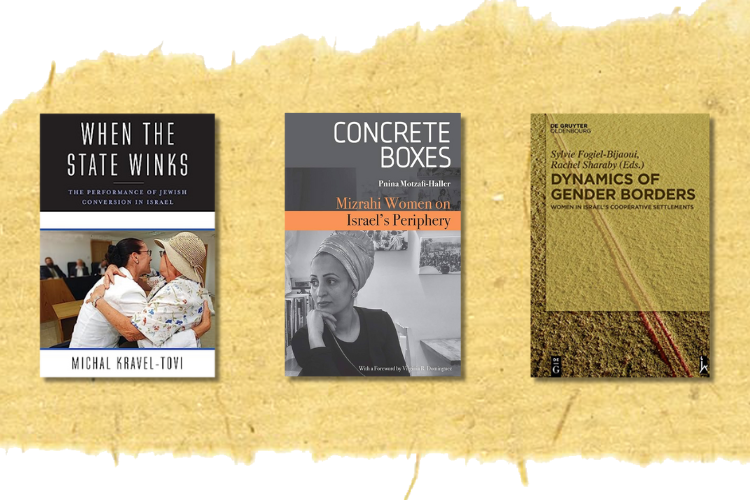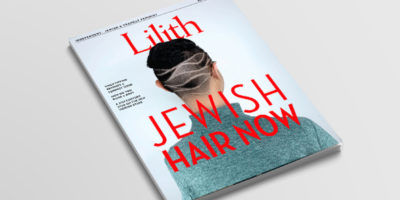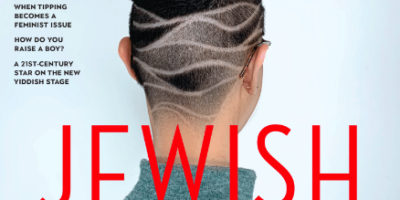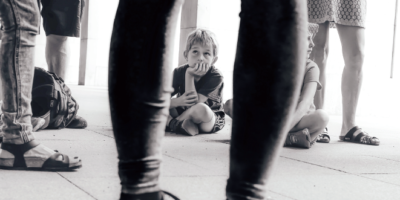
Israel’s Women on the Margins
With Israel’s political woes blanketing the news these days, it’s hard to remember
how multi-layered and complex a country it is. Its modern society was created by socialist pioneers, who struggled, somewhat successfully, to create economic and gender-egalitarian new communities. After statehood, Israel took in Jews from Arab lands and tried to integrate them, less successfully, into that developing society. More recently, Israel’s latest challenge has been absorbing hundreds of thousands of Russian immigrants with minimal, if any ties to Judaism or Jewish life. Three new academic books written and compiled by feminist Israeli academics address these particular facets of the challenges and shortcomings of the Jewish state.
When the State Winks: The Performance of Jewish Conversion in Israel, by Michal Kravel-Tovi. (Columbia University Press, $65) is a detailed ethnography. Anthropologist Michal Kravel-Tovi focuses on how and why Israel’s state bureaucracy is involved in managing the religious conversion of immigrants (mostly young women) from the former Soviet Union (FSU), mostly women because under traditional Jewish law the religion of the mother determines her child’s religion.
Kravel-Tovi engaged in three years of research from 2004–2007, during which she sat in on conversion classes, rabbinic conversion court proceedings, and ritual immersions in a mikveh. She interviewed teachers, rabbis, judges, and women who were in the process of converting through Israel’s state-sponsored Orthodox system.
Kravel-Tovi begins by describing how and why Jewish conversion has become part of what she terms “Zionist biopolitical policy” in Israel—using conversion of former FSU women to increase Israel’s Jewish population. Her focus is how the conversion candidates and the state agents—the conversion educators rabbinic court judge—handle the contradictory forces of Israel’s conversion policy. All parties, she argues, are concerned with issues of role-play, sincerity, and suspicion, demonstrating how all parties collaborate to put on believable conversion “performances.” The final chapter features the personal narratives of the conversion candidates, who must present personal statements to the rabbinic court that lend sincerity to their conversion process.
Many of the female potential converts have paradoxical Israeli-Jewish identities. While not considered Jewish according to Orthodox halacha, many grew up in Israel believing they were Jewish (and came to Israel under the Law of Return because of Jewish family connections). Invited to immigrate by the State of Israel, but then excluded from full membership in Israeli Jewish civic and religious life, most of the former FSU women find themselves in a painful no-woman’s-land labeled the harsh exclusionary Hebrew term goya (non-Jew/gentile) in Israeli society until they convert. One senior rabbi in the rabbinic conversion court compared these non-Jewish women in Israel to landmines: “…The foreign women will marry and have children, loyal citizens of Israel. It is a commandment to clear away such mines.”
In Concrete Boxes: Mizrahi Women on Israel’s Periphery (Wayne State University Press, $36) feminist anthropologist Pnina Motzafi-Haller of Ben Gurion University documents the lives of five Mizrahi women from the economically struggling development town of Yerucham, in Israel’s Negev. An activist who lived in the U.S. for almost two decades before returning to Israel, Motzafi-Haller published the Hebrew version of this book in 2012, as she wanted it to be read and discussed within Israel. The book was adapted into a play produced by the Dimona Theater, which traveled with the production around Israel for two years, dramatizing for an even wider audience the issues in Mizrahi women’s lives.
The five women featured in the book all have different approaches for dealing with the “concrete boxes” that have trapped them in Yerucham. Nurit is a single mother on welfare whose former husband was addicted to drugs; she worked many jobs to support her family. Nurit maintains dignity and finds meaning in her life through family events such as her son’s bar mitzvah. Efrat, another mother, becomes increasingly religiously observant as a way to deal with her life’s challenges. Her increased religiosity opens up opportunities for economic mobility and respectability, including a better job in a middle-class community, more than a secular education provides.
Rachel is considered a successful Yerucham resident despite her challenging background—coming from a poor family, married as a teen before finishing high school, having four children and then divorcing her abusive husband. She moves between middle-class and working-class settings, often as a representative of her community, but she is limited in her ability to juggle the different cultural nuances each group demands. Esti, “the rebel,” goes against communal norms by refusing to marry, have children or keep a job. While choosing a non-traditional path for a Mizrahi woman is freeing for her, it also leads to isolation and economic hardship. Gila, the author’s neighbor in Sde Boker grew up in Yerucham, but was able to leave her birthplace and create a middle-class, educated, professional life after leaving.
Sylvie Fogiel-Bijaoui and Rachel Sharaby have edited Dynamics of Gender Borders: Women in Israel’s Cooperative Settlements (Walter de Gruyter GmbH, & Hebrew University Magnes Press, $115)
Israel’s signature collective settlements, kibbutzim and moshavim, were based on ideals of gender equality and that of a new, egalitarian, socialist society in a new land. Kibbutzim were characterized by the communal features of formerly private domestic spaces—children’s houses, and communal kitchens, dining rooms and laundry. Moshavim were socialist agricultural communities that combined elements of individual and collective living, based on family farms. Yet, as the studies in this edited collection, show despite innovations in child-rearing practices, religious life, and labor, for women in these utopian communities, gender equality was still elusive.
The first section of the book collects women’s experiences in the pre-State period, including unique research on kibbutz mothers who wrote in secret diaries of their pain at being separated from their children raised collectively in children’s houses, pain they had to hide for fear of being seen as opposed to gender equality and the new society they were building. Another chapter explores mothers on moshavim who felt compelled to break gender constraints and fight against fascism by enlisting in British forces in the Middle East during World War II. They write of their pride in serving, but also of the sacrifice to their families and communities. On religious kibbutzim, women grew frustrated as rabbis debated whether they were allowed to wear shorts or pants while doing agricultural work, exemplifying the conflict between traditional constraints and the new, collectivist kibbutz.
In the book’s second section, we get a closer view of the period after the founding of the State. Various factors—the declining status of the labor settlement movement; the waves of immigrants from Asia, North Africa and Europe that presented many absorption challenges to Israel and the collective settlements; and Israel’s integration into the global neo-liberal economy and the processes of privatization—led to valuing individualism in the kibbutzim and moshavim. Changes arrived, but not gender equality. Articles describe how Mizrahi women immigrants integrated into moshavim, how economic and labor changes to kibbutzim and moshavim in modern times affected women, and how second-generation kibbutz mothers, rebelling against their experiences as children, pushed to make kibbutzim more family-oriented, by pressing for such “radical” changes as family meals and family sleeping arrangements.
All these books deal with people who have been on the margins of Israeli society. Together, they paint a devastating but important picture of the ways reality in Israel has failed to live up to ideals.
Susan Sapiro is a researcher and writer for nonprofits, and a book critic.





